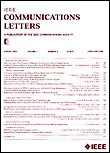
IEEE COMMUNICATIONS LETTERS
Scope & Guideline
Advancing the Frontiers of Communication Technology
Introduction
Aims and Scopes
- Wireless Communications:
Research in wireless technologies, including protocols, architectures, and systems that enhance mobile and fixed wireless communication. - Signal Processing:
Innovative algorithms and techniques for signal processing in various communication scenarios, including modulation, detection, and error correction. - Network Technologies:
Studies on network architectures, protocols, and performance evaluation, including 5G, IoT, and beyond. - Sensing and Communication Integration:
Exploration of integrated systems that combine sensing and communication capabilities, particularly in emerging applications such as smart cities and autonomous systems. - Security and Privacy:
Research addressing security challenges in communication systems, including cryptographic methods, secure transmission, and privacy-preserving techniques. - Machine Learning in Communications:
Application of machine learning and AI techniques to improve communication systems, including resource allocation, network optimization, and predictive modeling. - Reconfigurable Intelligent Surfaces (RIS):
Investigations into the use of RIS technology to enhance wireless communication performance and coverage.
Trending and Emerging
- Reconfigurable Intelligent Surfaces (RIS):
Research into RIS is rapidly expanding as a promising technology for enhancing wireless communication performance and flexibility. - Machine Learning Applications:
Machine learning techniques are increasingly applied to optimize various aspects of communication systems, including channel estimation, resource allocation, and signal classification. - Integrated Sensing and Communication (ISAC):
The integration of sensing and communication technologies is emerging as a key theme, addressing the needs of modern applications such as autonomous vehicles and smart cities. - Energy Efficiency:
There is a growing emphasis on energy-efficient designs and strategies in communication systems, particularly in the context of sustainable development and green technologies. - Ultra-Reliable Low-Latency Communication (URLLC):
Research focused on URLLC is gaining importance, especially with the demands of critical applications in industries such as healthcare and autonomous driving. - Quantum Communication:
The exploration of quantum communication methods is emerging as a cutting-edge area, with potential applications in secure information transfer. - Terahertz Communication:
Research in terahertz communication is gaining momentum, driven by the need for higher data rates and bandwidth in future wireless systems.
Declining or Waning
- Traditional Circuit Design:
Research focusing solely on traditional circuit design in communications has decreased, possibly due to the shift towards more integrated and software-defined approaches. - Legacy Communication Protocols:
Studies centered on older communication protocols are becoming less prominent as newer technologies and standards (like 5G) take precedence. - Basic Modulation Techniques:
Basic modulation techniques are being overshadowed by more complex schemes that incorporate machine learning and advanced signal processing. - Fixed Network Infrastructure:
Research focused exclusively on fixed network infrastructures is declining, as there is a greater emphasis on mobile and flexible network solutions. - Single-User Systems:
The focus on single-user communication systems is waning in favor of multi-user and cooperative communication strategies.
Similar Journals
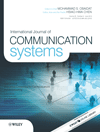
INTERNATIONAL JOURNAL OF COMMUNICATION SYSTEMS
Advancing the Frontiers of Communication SystemsInternational Journal of Communication Systems, published by Wiley, is a premier scholarly publication dedicated to advancing the field of communication systems and network engineering. With an ISSN of 1074-5351 and E-ISSN 1099-1131, this journal has emerged as a critical resource for researchers and professionals alike, showcasing innovative research from 1994 to 2024. Holding a distinguished Q2 quartile ranking in both Computer Networks and Communications and Electrical and Electronic Engineering, it ranks within the top tiers of its field, reflecting its high impact and relevance. The journal's focus spans a wide range of topics within these disciplines, including but not limited to, advanced communication protocols, network design, signal processing, and emerging technologies. Although it does not currently offer open access options, the journal remains committed to disseminating high-quality research to contribute meaningfully to the scientific community. Researchers, professionals, and students will find invaluable insights and ideas to further their work and understanding in this dynamic field.
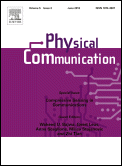
Physical Communication
Pioneering Research in Electrical EngineeringPhysical Communication is a leading academic journal published by Elsevier, focusing on the innovative field of electrical and electronic engineering. With an ISSN of 1874-4907 and ranking in the Q2 category for 2023, this journal is recognized within the top tiers of its discipline, currently holding the 260th rank out of 797 in Scopus rankings, and situated in the 67th percentile. The journal seeks to disseminate high-quality research articles that explore various aspects of physical communication technologies and methodologies, providing a vital platform for academia and industry practitioners alike. Although it does not currently operate on an open access basis, the journal's emphasis on rigorous peer-review and high-impact content ensures that it remains a cornerstone for advancements in understanding the dynamic interplay between physical principles and communication technologies. Based in the Netherlands since its inception in 2008, Physical Communication aims to foster discussions that drive innovation in communication systems, thereby serving as an essential resource for researchers, professionals, and students dedicated to pushing the boundaries of this exciting field.
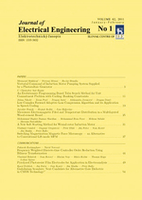
Journal of Electrical Engineering-Elektrotechnicky Casopis
Connecting Researchers to the Future of Electrical Engineering.Journal of Electrical Engineering - Elektrotechnicky Casopis is a distinguished peer-reviewed journal published by Slovak University of Technology, dedicated to advancing the field of Electrical and Electronic Engineering. With an ISSN of 1335-3632, this journal aims to disseminate high-quality research findings, innovative methodologies, and significant technological advancements that contribute to the development of electrical engineering practices. Operating since 2004, it embraces an open-access model to enhance the visibility and accessibility of scholarly articles, thereby fostering knowledge exchange within the global research community. The journal holds a respectable Q3 categorization in the field, ranked 544 out of 797 in Scopus, indicating its growing influence within the discipline. Through rigorous peer-review processes, it provides a platform for researchers, professionals, and students alike to publish their work and stay informed on cutting-edge developments. Located in Bratislava, Slovakia, the journal is an essential resource for anyone involved in the rapidly evolving world of electrical engineering.

IEEE Open Journal of the Communications Society
Navigating the Future of Communications TogetherWelcome to the IEEE Open Journal of the Communications Society, a premier open-access publication dedicated to advancing the fields of computer networks and communications. Launched in 2020 by the esteemed IEEE-Institute of Electrical and Electronics Engineers, this journal operates under a commitment to disseminate high-quality, peer-reviewed research that fosters innovation and collaboration within the global communications community. With an impressive impact factor and currently positioned in the Q1 category of Time's rankings for Computer Networks and Communications (2023), the journal ranks 21st out of 395 in its field, placing it within the top 6% globally. It serves as a vital forum for researchers, professionals, and students, providing them with immediate access to pioneering studies and emerging trends. Being fully open access, all published articles are freely available to enhance the reach and impact of your research. Join us in exploring transformative ideas and technologies that shape the future of communications.
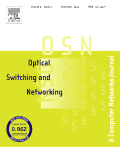
Optical Switching and Networking
Exploring the Frontiers of Optical NetworkingOptical Switching and Networking is a prestigious academic journal published by ELSEVIER, focusing on cutting-edge research and developments in the field of optical communications and networking. With an impressive impact factor and quartile ranking, this journal is recognized as a vital resource for professionals and researchers in Computer Networks and Communications and Electrical and Electronic Engineering, positioned in the Q2 category according to the latest metrics. Aiming to foster innovation and knowledge exchange among scholars, the journal covers a diverse range of topics, from optical switching mechanisms to the latest advancements in network architecture. Researchers benefiting from its accessible content will find it an invaluable platform for advancing their work and engaging with a global community of experts. For those seeking to enhance their understanding and contribute to the academic discourse in these rapidly evolving fields, Optical Switching and Networking serves as an essential conduit for high-quality research and ideas.

Ad Hoc & Sensor Wireless Networks
Pioneering discoveries in wireless technology and engineering.Ad Hoc & Sensor Wireless Networks, an esteemed journal published by OLD CITY PUBLISHING INC, provides a dedicated platform for the dissemination of pioneering research in the realms of computer science, electrical and electronic engineering, and instrumentation. With an ISSN of 1551-9899 and an E-ISSN of 1552-0633, this journal has established itself as a crucial resource for scholars and practitioners alike, actively contributing to the advancements in ad hoc networks and wireless sensor technologies. It holds a commendable position within the third quartile in its respective fields, with Scopus rankings reflecting its relevance in the academic community. As a publicly accessible source of valuable insights, the journal aims to inspire innovation and facilitate progress across various disciplines. Situated in Philadelphia, PA, and converging its efforts from 2005 to 2024, Ad Hoc & Sensor Wireless Networks continues to be a beacon of research excellence, impacting both theoretical and practical domains in technology.
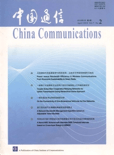
China Communications
Advancing the Frontiers of Telecommunications ResearchChina Communications is a prestigious peer-reviewed journal published by the China Institute of Communications, dedicated to advancing the field of telecommunications and information technology. With an impressive Q1 ranking in both Computer Networks and Communications and Electrical and Electronic Engineering, this journal stands out as a leading source of cutting-edge research and innovative solutions in the engineering domain. The journal aims to provide a platform for scholars and practitioners to share their findings on the latest trends, technologies, and methodologies impacting the communications landscape in China and beyond. It is particularly noted for its high visibility in the academic community, as demonstrated by its Scopus rankings, which place it in the top percentiles for both fields. Through its commitment to quality content, China Communications contributes significantly to the advancement of knowledge, making it an invaluable resource for researchers, professionals, and students alike.
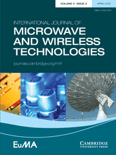
International Journal of Microwave and Wireless Technologies
Unveiling Trends in Wireless Communications Research.International Journal of Microwave and Wireless Technologies is a leading academic journal published by Cambridge University Press, dedicated to the advancement of knowledge in the fields of microwave and wireless technologies. Since its inception in 2009, this journal has established itself as a crucial platform for researchers, professionals, and students involved in Electrical and Electronic Engineering, currently positioned in the Q3 quartile as per the 2023 category rankings. With an ISSN of 1759-0787 and an E-ISSN of 1759-0795, it facilitates the dissemination of high-quality research articles that address emerging trends and challenges in microwave and wireless communications. The journal is committed to fostering innovation and collaboration within the global scientific community, aiming to publish significant contributions that appeal to both academic and industrial perspectives. Its Scopus ranking of 382 out of 797 highlights its relevance and impact in the engineering domain. While currently not an open-access journal, it provides various access options for its readership, ensuring that cutting-edge research remains accessible to all.
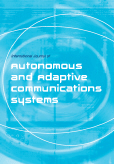
International Journal of Autonomous and Adaptive Communications Systems
Empowering Scholars in the Realm of Adaptive Communication SystemsInternational Journal of Autonomous and Adaptive Communications Systems, published by INDERSCIENCE ENTERPRISES LTD, serves as a vital platform for researchers and professionals engaged in the dynamic fields of autonomous systems and adaptive communication technologies. Since its inception in 2008, this peer-reviewed journal has contributed to the advancement of knowledge within the realms of Computer Science and Electrical and Electronic Engineering, albeit currently positioned in the Q4 quartile, suggesting substantial opportunities for growth and influence within these disciplines. With an emphasis on innovative research tackling challenges in autonomous communication frameworks, the journal invites submissions that explore the convergence of various technologies and their applications. While the journal does not offer open access, it remains a significant resource for academia and industry at large, facilitating collaboration and dialogue among emerging scholars, seasoned experts, and applied practitioners in the UK and beyond. The journey of this journal from 2008 to its ongoing publications through 2024 reflects a commitment to fostering academic discourse in this essential area of study.

IEEE COMMUNICATIONS MAGAZINE
Exploring Innovations in Networking and EngineeringIEEE Communications Magazine, published by the Institute of Electrical and Electronics Engineers (IEEE), is a leading journal in the fields of Computer Networks and Communications, Computer Science Applications, and Electrical and Electronic Engineering. With an impressive impact factor reflected in its Q1 quartile rankings across multiple categories, this periodical stands at the forefront of technological advancement and innovation. Since its inception in 1979, the magazine has been committed to disseminating high-quality research and insightful reviews that address current issues in communications technology. Targeting an audience that includes researchers, industry professionals, and students, IEEE Communications Magazine strives to foster a deeper understanding of emerging trends and challenges in the communications sector. Its affiliation with IEEE, a global leader in advancing technology, underlines the journal's credibility and significance in supporting scholarly communication in electrical and electronic engineering. The magazine operates without open access options, necessitating subscription or institutional access for its comprehensive content.